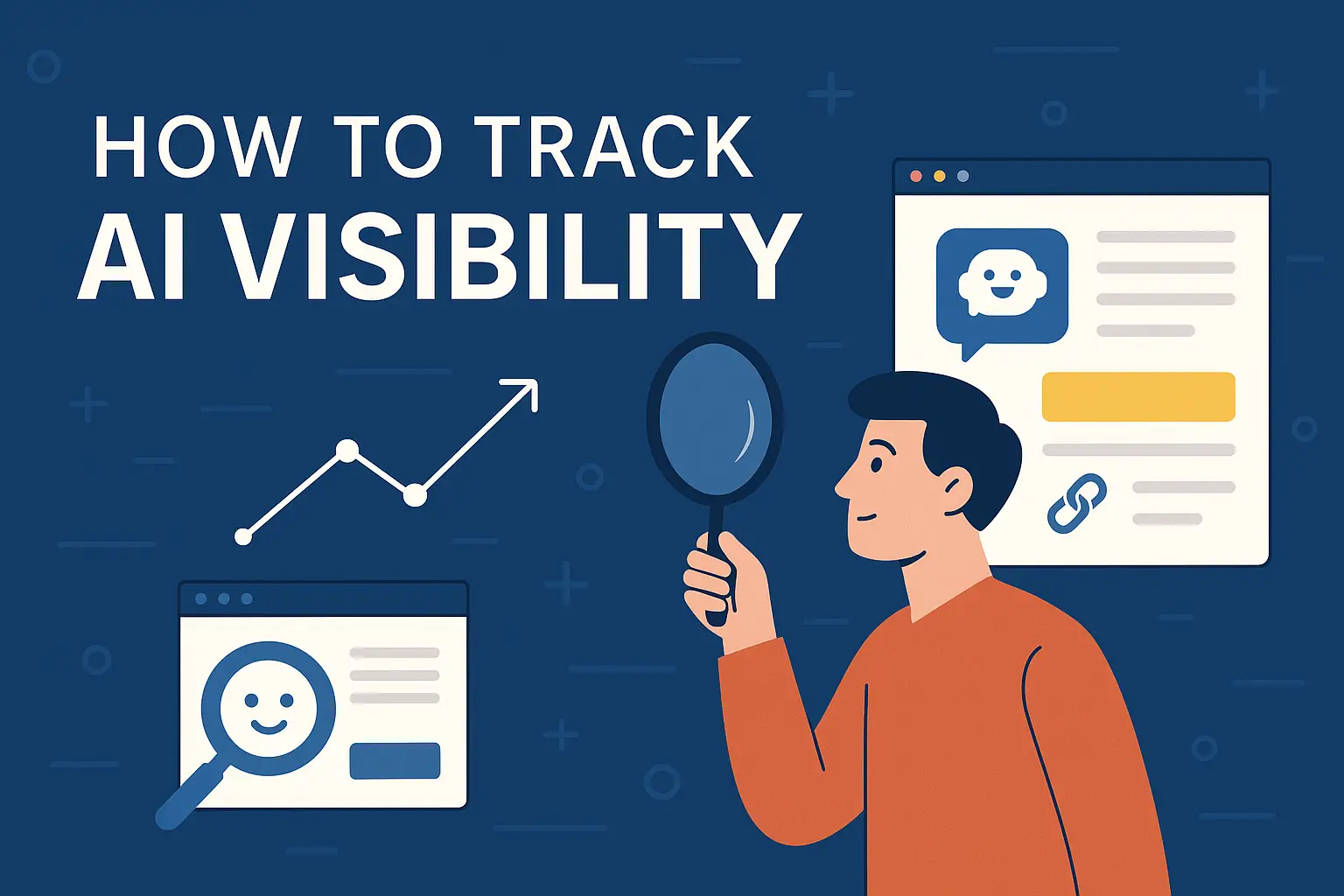
How to Track AI Visibility: A Complete Guide
Artificial intelligence is changing the way people search and discover information. Instead of browsing through ten blue links on Google, users increasingly turn to AI assistants such as ChatGPT, Claude or Perplexity. For brands, this creates a new challenge: it is no longer enough to rank high on search engines. The key question becomes: does an AI actually mention your brand at all?
AI visibility tracking means measuring how often and in which context a brand, product or website is mentioned inside AI-generated answers. It is the next evolution of SEO in the era of conversational search.
In this guide you will learn everything you need to know about ai visibility and how to track it.
What Is AI Visibility?
AI visibility describes the presence of your business in AI answers. A model might insert a direct link to your website, reference your domain as a source, or simply mention your brand name without linking. Each of these appearances signals that a language model recognizes you as relevant within your niche.
This visibility is not static. AI systems continuously retrain, refresh their knowledge, and update how they cite sources. That means your presence in their answers can change from day to day—just as keyword rankings shift in traditional SEO.
Why Tracking AI Visibility Matters
Relying only on Google rankings gives an incomplete picture. A website may struggle to rank on the first page of search results but still be recommended by an AI when users ask for advice. Conversely, you might hold strong positions in Google yet remain invisible in AI conversations.
Tracking your AI visibility helps you uncover:
- whether your brand is being recognized in this new search ecosystem,
- how you compare against competitors,
- and which opportunities exist to strengthen authority with content that AI models are likely to reference.
In short, visibility in AI answers is becoming just as important as search visibility once was.
How to Track AI Visibility Step by Step
Step 1: Define Relevant Queries
Begin by thinking about the questions your potential customers would actually ask an AI assistant. These are not simple keywords but full prompts such as “best project management software for small teams” or “how to track AI visibility for SEO.” Creating a clear list of these queries provides the foundation for your monitoring.
Step 2: Collect AI Answers Regularly
Run your queries against different platforms like ChatGPT, Claude and Perplexity. Because answers change daily, you should log the results continuously rather than relying on one-off checks. Note whether your brand appears, in what context, and how often competitors are mentioned instead.
Step 3: Turn Mentions Into a Score
To make AI visibility measurable, many teams assign weights to different types of mentions. A direct link to your website carries more weight than a plain-text mention, while a citation might count less but still indicate authority. Combining these values into a visibility score allows you to track progress over weeks and months—just like monitoring SEO rankings.
Step 4: Automate the Tracking Process
Manual tracking quickly becomes overwhelming. Tools like Lemitrack automate the entire process: they run your queries against multiple large language models, extract mentions and citations, calculate a visibility score, and display the results in dashboards. Instead of spreadsheets and copy-paste, you get daily insights into your AI presence.
Step 5: Use the Insights to Adjust Strategy
The data is only valuable if you act on it. If your brand rarely appears, consider creating more authoritative resources, strengthening your backlink profile, or adjusting how you present brand information so AI systems can better recognize it. If competitors dominate answers, study why they are preferred and adapt your own content accordingly.
Automate Your AI Visibility Tracking
Manual checks don’t scale. Dedicated tools run your queries on a schedule across ChatGPT, Claude, and Perplexity, capture full answers, extract direct links, citations, and plain-text mentions, and roll everything into a single visibility score with trendlines. Lemitrack does exactly this: set up a project in minutes, add your domains and prompts, and get daily updates with transparent answer logs and historical dashboards—so you can see which prompts and models drive visibility and act faster in the zero-click era.
Beyond SEO: The Future of Visibility
Tracking AI visibility is not about replacing SEO but extending it. We are entering a world where discovery happens through conversations with machines, not just search engines. By understanding how to track AI visibility and actively optimizing for it, you ensure your brand is not left out of those conversations.
Google itself is already experimenting with AI Overviews, while OpenAI and Perplexity are positioning themselves as search alternatives. Experts at OpenAI and Perplexity confirm that the way people access knowledge is rapidly changing. Brands that measure and adapt early will secure a significant advantage.